×
[PR]上記の広告は3ヶ月以上新規記事投稿のないブログに表示されています。新しい記事を書く事で広告が消えます。

Welcome dear reader, to another blog entry starting with a photo of a package with all the interesting information censored by yours truly. Sadly, I have to censor my postal address to protect myself against stalkers and those who wish me ill just because I have a cool blog. Not to mention all of you crazy female readers who wish only to send me your pictures, but unfortunately you don't know where to send them.
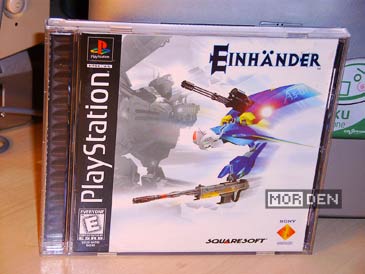
So what special and interesting items might this package contain? Brace yourselves, for it's Einhänder for the PlayStation, which I've won in a competition held by my friends over at Cryptic Allusion. In addition I also recieved some Razer promotional merchandise and a Love Hina mini mouse pad. How cool is that, huh?
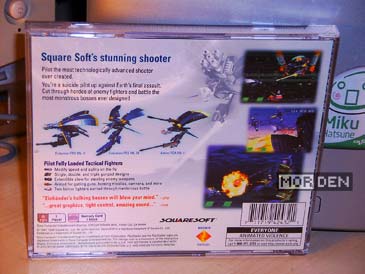
Now, a bit about the game. Einhänder [or アインハンダー as it is called in Japan] is a 2.5D shooter. Just like in G Darius or Thunder Force V, the graphics are polygonal, but the gameplay sticks to 2D mechanics with some occasionaly changing camera angles. The game was developed by Squaresoft, which in itself is a bit unusual when you think about what titles were developed by the company so far. Now having much experience in the field, the RPG factory did surprisingly well and made Einhänder into a pretty decent shoot 'em up.
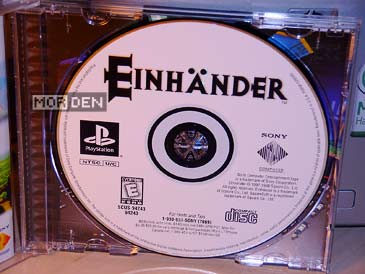
So, what does Einhänder have in store for a shoot 'em up fan? The game is pretty straightforward, sticking to traditional style of gameplay reminescent of the previously mentioned G Darius, with maybe less dynamic pacing. While it will not satisfy those who are looking for bullet hell, it should turn out to be entertaining enough for those who love R-Type and its style.
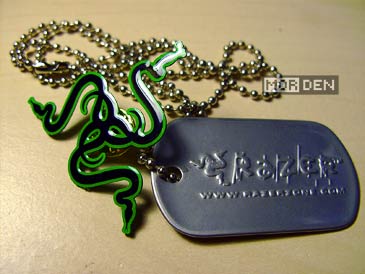
What makes Einhänder stand out are not the graphics, nor the gameplay, but the weapons. Every weapon upgrade you pick up has a limited supply of ammo, forcing you to hunt for bullets and upgrades all the time rather than leveling up your ship and blasting away. While this might not seem like a good move on Square's part, it actually adds to the gameplay and makes you try harder.
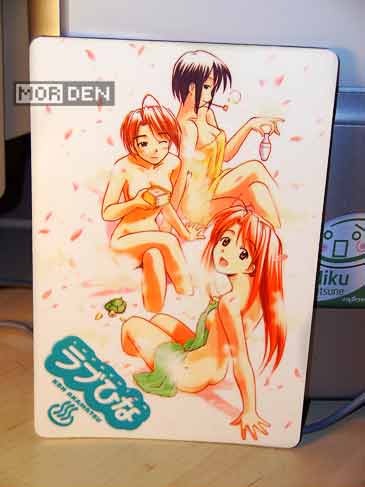
With the gameplay out of the way, let's focus on the looks. Graphically, the game is pretty generic when you think of the games from mid-nineties. The design is solid and you can see that it came from someone with a serious passion for mecha. That said, one thing that could be done better are the backgrounds. The stages don't catch your eye like R-Type Delta ones can, but they're not bad either. Unlike many other shooters that tend to change the theme in between stages, Einhänder sticks to the dark and futusristic design.
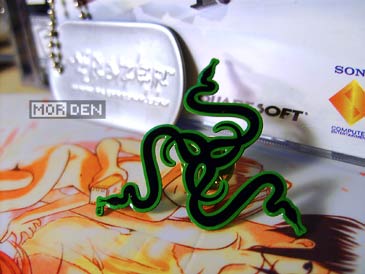
Nowdays this game became somewhat of a collectors item if only because of its uniqueness as a one shot on Squaresoft's part. It seems like Einhänder was never intended to become a franchise and after ten years and change, it is the only shooter Squaresoft has ever made.
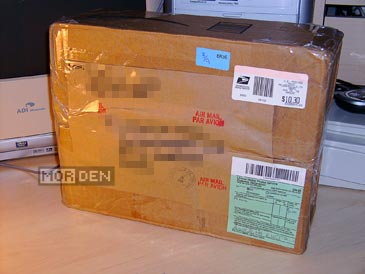
Now what's that on the photo? Another package with the address all pixly and unreadable? That's right! And believe it or not, it's a package containing another prize I won in a Cryptic Allusion contest. I won it a while back, but I never got around writing anything about it, so why not do it now, since I'm already at describing my prizes.
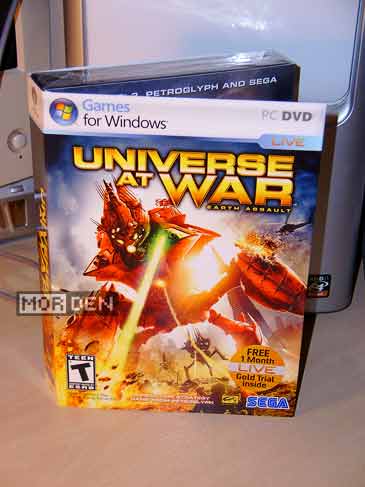
Universe at War: Earth Assault is a real time strategy for the PC and Xbox 360 in which you take on a role of one of several alien parties that have a go at each other at Earth's expense. That's right. Various alien races have decided to harvest our planet but they can't really decide between themselves who gets to anihilate us all and suck the planet dry.
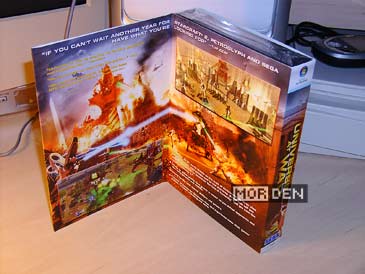
Since I haven't really got around to actually playing the game, that's about as much information I can give you at this point. It's been ages since I tried any RTS, last one probably being KKND. That doesn't mean I don't like real time strategies, rather than I like them less than a billion other games I haven't yet finished.
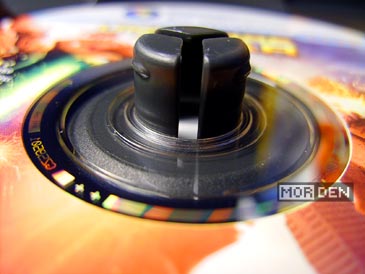
What's interesting is that this game came with a code for Windows Live online service that allowed you to play for free under a period of time. Microsoft has however abandoned any plans of ripping PC gamers off, due to extremely low interest among gamers, who for some reason weren't too happy about paying for what should be free of charge or paid by the money you spent on your game. Take that Microsoft.
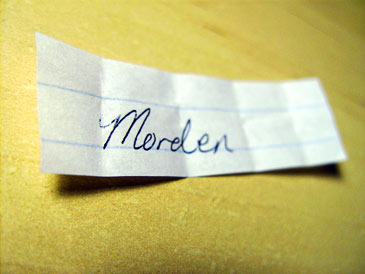
So, that's that. If you're planning on holding a contest, make sure you pick the ticket with "Morden" on it, just like the one above. And if you're a game box manufacturer, make sure your box can hold at least 10 discs, just like the Universe at War box can. That's it for today! Cheerio!
PR
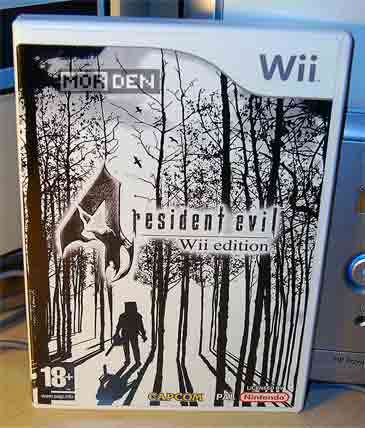
You just have to love the price cuts and special offers just before Christmas. I know I do. If it wasn't for those low prices I probably never would have bought Resident Evil 4 for the Wii, seeing as I already own the GameCube version. However, prices got low and I couldn't pass on this title for the money they were asking.
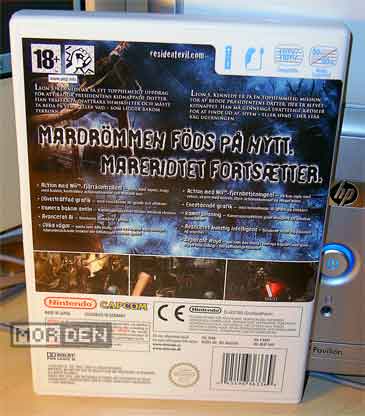
Resident Evil 4 is not a new title but it can still compete, even against the titles released for the more powerful platforms like the PlayStation 3 or Xbox 360. Yes, the Wii version is not much more than a GameCube port, but the gameplay is still as solid as it was back in January of 2005, and thanks to Wii's nunchuk plus wiimote combo, the controls got even tighter.
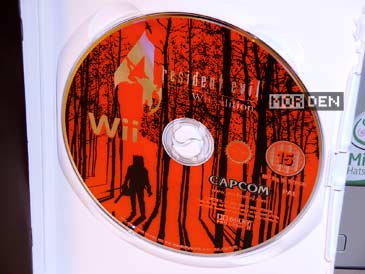
Capcom likes to make money by re-releasing their titles over and over again. Just look at Street Fighter series and you'll know what I'm talking about. Resident Evil 4 first came out for Nintendo's GameCube, and was a time exclusive for almost a year. After that it was ported to PlayStation 2 with some additional content added and finally, the game made its way to Windows PCs in 2007, again, adding some extras here and there.
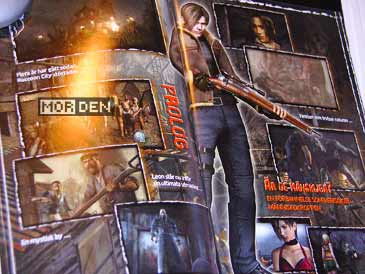
What makes Resident Evil 4: Wii Edition special is the fact that it contains all the extras from both the PlayStation 2 and Windows versions, plus the game can be played using Wii's own controllers. This means we get a ton of extras and a massive upgrade of the controls. While the Wii controls do take a moment of getting used to, once you've mastered them, there's no stopping you.
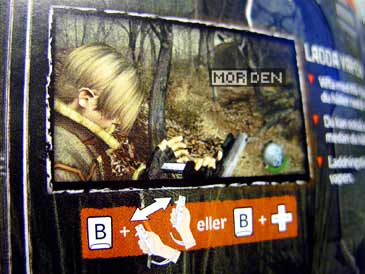
The most important feature here is the aiming. While in previous home platform versions you had to tilt the analogue sticks to guide Leon's hand holding a gun, on the Wii you simply point at the zombie head you want to pop and you pull the wiimote trigger. It's as simple as that and it's more accurate, especially during crazy fights against hordes of enemies. Simply put, the aiming now resembles a lightgun game and it works.
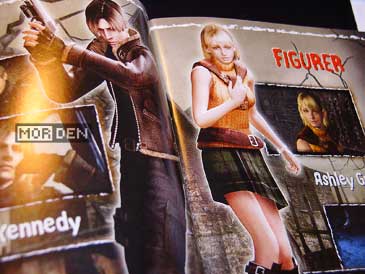
So should you or should you not buy the Wii Edition? That all depends. If you already own the GameCube version, I would think twice before buying essentialy the same game once again. Like I said before, I wouldn't normally get it if it wasn't for the insanely low price. That aside, the extras are steal appealing. Add to that widescreen support and who knows, maybe that's exactly what some people are looking for.
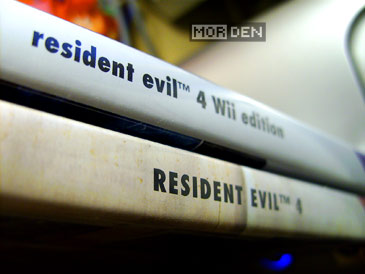
Hardcore fans should own it, if only for the extras. So if you have to get it, buy it cheap or buy it used [which often equals cheap]. If you don't own Resident Evil 4 and you do own a Wii, buy it. You're missing out on one of the best games of the last decade. Besides, if you're planning on playing Resident Evil 5, it's best to prepare and play any previous games in the series.
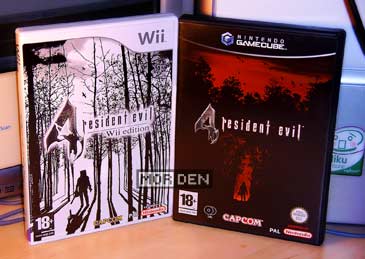
For those who for one reason or another are uncomfortable with Wii controls, there's always the option to use a GameCube controller and you can play the game just like you would on a GameCube, tedious analogue stick aiming included. Now that I bought the game twice, I hope Capcom won't release a yet another version for the 360 or PS3, because I'm not buying it for the third time.
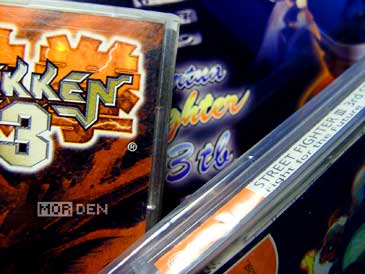
The years 1996 and '97 sure bring back some memories, particularly arcade related ones. The console revolution was in full swing and everyone could finally experience the gameplay quality that up until now was exclusive to the arcades. Just when I thought things couldn't get eny better, Sega unleashed their Model 3 arcade hardware. September of '96 marks the date when everything changed and the future arrived. To see one million polygons in motion, forged into a fighting game by the AM2 team led by Yu Suzuki was an experience unmatched to this date. Virtua Fighter 3 became a benchmark and other games would be measured by its greatness for many years to come.
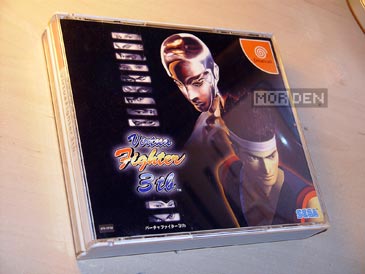
Virtua Fighter 3 was faster, better and more complex than any other fighting game seen before. It was a marvel both in terms of graphics and gameplay depth. Terrain variations on full 3D arenas plus the evade button made this title into the very first fully three dimensional fighting game ever made. In 1997 Sega released an updated version of their smash hit and added the team mode, thus the name "Team Battle".
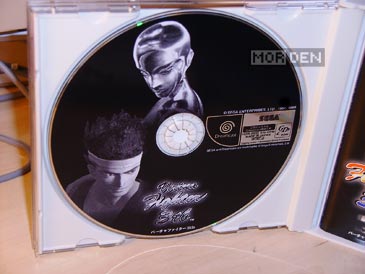
Before I go any further into writing this entry, let me explain the first photo, which might seem a bit out of place for some. 1997 was the year when Virtua Fighter 3: Team Battle arrived, but it was also the year when Capcom released their CPS-III hardware along with Street Fighter III: New Generation. Namco followed shortly after and released Tekken 3 on their new System 12 hardware. Each one of these games was groundbreaking in their own ways and I will never forget the years when this trio ruled the arcades all over the world. Let's get back on the subject of Virtua Fighter 3 though.
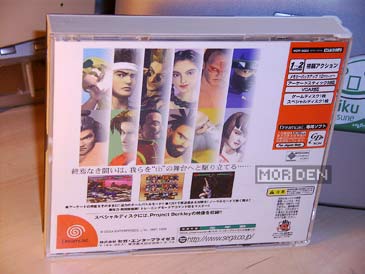
Nowdays, whenever an important title premieres at the arcades, it's usually ported to one of the home platforms pretty quickly. Back in '96 there was no console on the market that could be match for Sega's Model 3. Virtua Fighter 3 had to wait for a suiting hardware to appear and so, after over two years from the arcade release, it finally got ported to Dreamcast and this is where things went wrong. Swamped with Dreamcast projects, Sega themselves didn't have the time to handle the console port of their flag title, so instead the game was ported by Genki.
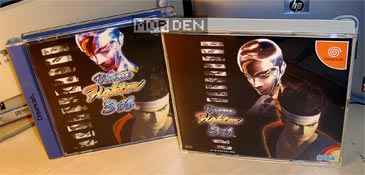
Even though Sega's then upcoming platform had more than enough power to ensure an arcade perfect conversion, the development process was rushed to meet the Dreamcast launch date amd the conversion suffered greatly. The number of polygons was lowered which was clearly noticable, especially in the clothing which lacked the same amount of detail the arcade version had. Despite that, Virtua Fighter 3 managed to become one of the best selling titles on the Dreamcast and is still a great game which includes unique features that are yet to return to the series.
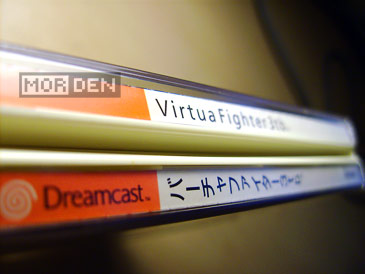
My Virtua Fighter 3 story doesn't end yet, so don't go anywhere. We all know Shenmue, the overly-ambitious Yu Suzuki project that never saw an end. Before it ever came out, it was codenamed Project Berkley and those who bought the first edition [Numbered HDR-0002. Edition numbered HDR-0017 is a second run and comes in a standard jewel case, unlike the first edition, which comes in a double.] of Virtua Fighter 3 for Dreamcast could take a sneak peek at the game. The Project Berkley GD-ROM disc found in the VF3 game case contains a 30 minute long interview with Yu Suzuki, who first talks about each and every one of his earlier projects and explains what he was trying to acomplish with them. Later he talks about Shenmue and his thoughts on the RPG genre. Suzuki San thought it would only be appropriate to create a whole new genre for his mastodont of a project and so FREE [Full Reactive Eyes Entertainment] genre was born.
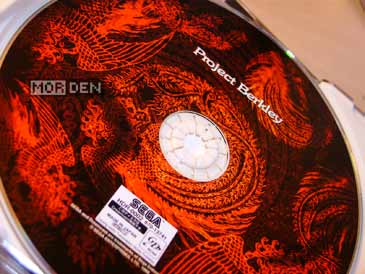
Throughout the whole interview, Yu Suzuki is rather vague when it comes to Shenmue details. He talks quite a bit about his understanding of a creative process. The player should not be constrained by too many boundries and progression in the game should be seen as a free choice, but a choice that a player wants to make. This is all pretty interesting and it shows how Suzuki evolved as a game designer. Not many have the same opportunity to make games as they see them, without anyone else breathing down their necks.

Even before the Suzuki talk starts, we get to see some Shenmue footage from a very early developement stage, including a handfull of scenes never seen in the game. In the later part of the video we also get a glimpse of character concept sketches and here we'll see many characters we already know [or rather those who have played Shenmue games know] but also many that were yet to appear. All in all, Project Berkley is packed with interesting material and this disc alone is a good enough reason to justify a purchase of first edition of the Virtua Fighter 3 Team Battle for the Dreamcast.
If you by any chance see a Virtua Fighter 3 cabinet, don't forget to show this marvelous machine some love. This brilliant piece of hardware and software was lightyears ahead of the competition when it first appeared and it still plays great even today. It's time to finish this entry, but before you leave, click on the thumbnail above and watch some footage from a beta version of the game to see a couple of outfits that didn't make it in the final release. While watching, notice the music, especially on Pai's rooftop stage. It sounds different [and worse] on Dreamcast. Yep, that's another one of Genki's gifts to us, people who wanted a 1:1 arcade conversion.
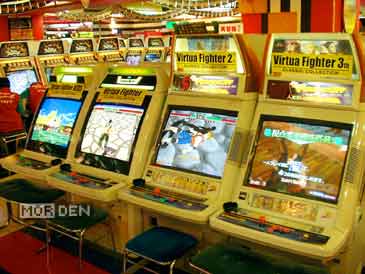
Lastly, one more picture and a rare sight indeed. Virtua Fighter, Virtua Fighter 2, Virtua Fighter 3 and Virtua Fighter Kids side by side in one of Akiba's arcades. This picture was taken during the peak of Virtua Fighter 4's popularity and at least a dozen of Virtua Fighter 4 machines can be seen in the background along with arcade staff members wearing VF4 jackets.
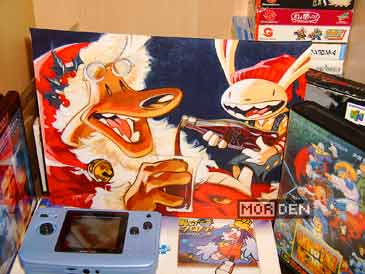
It's almost Christmas so let's get busy and put those fancy decorations up! This year has seen some great Sam & Max related releases, so it's only appropriate to have a Christmas themed portrait of my favorite dynamic duo up for show. Oh what a busy time of the year. The food need to be prepared, the house has to be clean, busy busy busy. I meant to write about Virtua Fighter 3 TB and Project Berkley but I was too lazy to do that last week and now ... well, to tell you the trusth I'm still to lazy. I could blame it all on the Christmas preparations, but I won't. I'm a lazy bum, that's all there is to it.
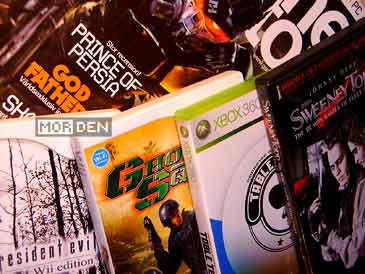
I did however make some new purchases, all christmas presents to myself of course, since I've been very, very good this year. I grabbed two Wii titles, Resident Evil 4 and Ghost Squad, one Xbox 360 title, Rockstar's Table Tennis and last but not least, Tim Burton's Sweeney Todd, which I finally got to watch. Oh, and I grabbed the latest issue of Game Reactor.

Let's hope I will find time to write about the new arrivals and that I finally will post about Virtua Fighter 3 aswell. I wouldn't hold my breath if I were you, dear reader. I am a lazy bum after all.
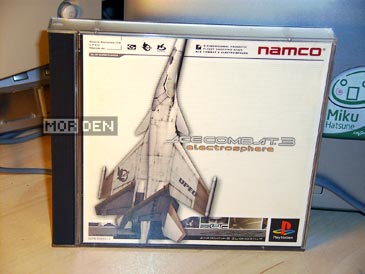
There are plenty of reasons to import Japanese editions. In most cases they just look so much cooler, they come out much earlier and there's often more game content and generally more of everything. Namco made Ace Combat into a successful franchise with the first two games, but it's the third installment in the series that takes the cake, or to be more specific, it's the Japanese version that does.
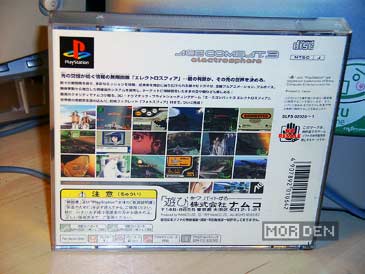
Since Japan is the country where it all goes down, they get almost all of the software first. Games are being developed in japanese and while they're being translated for the rest of the world, Japan has already played through them and forgot all about them. Ace Combat 3: Electrosphere came out in Japan on May 27th, 1999. The rest of the world had to wait for almost a year. One would think that during this year, US based Namco Hometek would have all the time they need to properly translate the game before its english release. Sadly, that didn't happen.
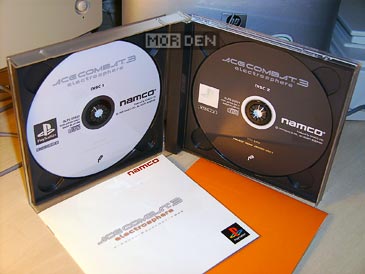
Ace Combat 3 was, and still is, vastly superior in almost all aspects to the previous games, featuring all new futuristic graphic design similar to what can be seen in WipeOut, great soundtrack produced by the sound team who also produced the music for Ridge Racer Type 4, completly new game engine utilizing some nice and previously unseen environment effects and all new storyline with plenty of missions to choose from. Sounds great, right? It is, and while Japan could enjoy the game in all of its glory, the rest of the world got a gutted product with the larger part of the content missing.
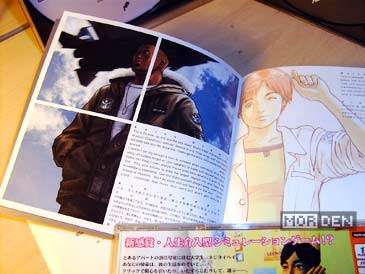
Before I get into details, let's talk a bit about the storyline in Ace Combat 3. The year is 2043 and much has changed. Money is technology and technology is power. The world is controlled by global corporations who are in a constant competition over territory and market. The major players are General Resource, Neucom and UPEO. While General Resource takes pride in using trusted technologies, Neucom is constantly striving for improvement, pushing the boundries of science. The two industry giants answer to NUN [New United Nations] but at the same time they're plotting against each other to ensure they come on top. UPEO with their military technology, takes the role of a peacekeeper and when corporations go to war, it's up to UPEO to eliminate the threat.
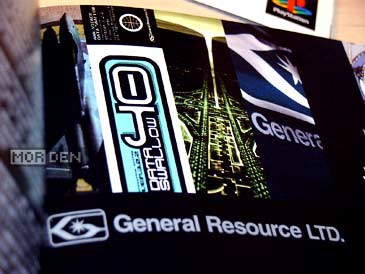
It seems that people at Namco Hometek couldn't be bothered with translating everything so what they did was cut out the majority of storyline and left the gameplay. Japanese version of Ace Combat 3 puts alot of emphasis on building up the story. There are anime cutscenes between missions, we get calls from other pilots, we can watch news reports and mission briefings are much more detailed. All we get in the english version is some text based intel before departure and that's pretty much it. If this wasn't enough, english version of the game offers 36 missions on one disc, while the Japanese version has 52 missions featured on two discs packed with top shelve storytelling.
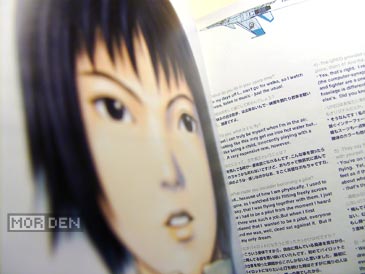
As if all the extra ingame content wasn't enough, inside the game case is a thirty page long booklet called "Ace Combat 3 Electrosphere Portfolio Photosphere". Here we can find out a bit more about General Resource, Neucom, UPEO, various game characters, fighter planes and the Electosphere itself. The book starts off with describing the world as it is today and then gives us some insight into each of the companies. Later we get to read some character presentations, some of them being personal thoughts, other being interviews. Everything is printed on a high quality paper with ocasional silver lettering or outline. Except for the Photosphere we also get a full color 26 page instruction manual.
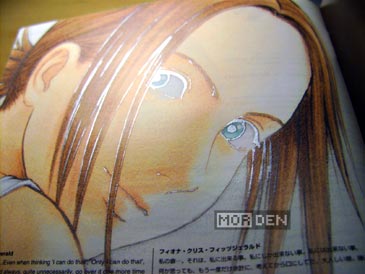
The game itself looks amazing. Namco used the same engine they developed for Ridge Racer Type 4 and even though Ace Combat 3, being a large open space game, can't show the technology off like R4 can, AC3 is still capable of producing some impressive visuals. You'll see the hot air coming from the aircraft engines distorting the image, you'll see some nice light reflections on the ocean surface, you'll see lens flares and you'll see gouraud shading on the planes. This plus much much more makes Ace Combat 3 into a masterpiece.
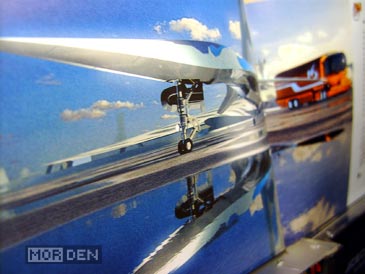
The sound doesn't dissapoint either. If you liked the soundtrack for Ridge Racer Type 4, you won't have anything to complain about. Guitars from previous games are replaced with some nice electronica, ambient and funk. You'll want to play through the game just to hear all of the tunes, I can guarantee it. Namco can produce a great soundtrack and music from AC3 is on my top ten Namco soundtrack list.
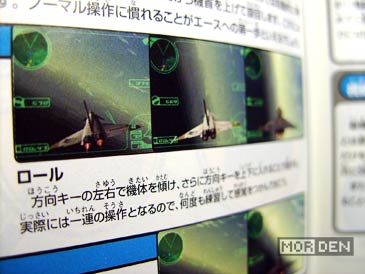
Years '96 through '99 were the best years Namco had. They produced some amazing games with feel and design still unmatched by their later releases. Soul Edge, Tekken 3, Ridge Racer Type 4 and Ace Combat 3: Electrosphere are what it was all about. If you had a console back then, it was NamcoStation. Nowdays I find new Ridge Racer or Tekken games less and less appealing. I won't say that Namco lost its touch, but something is missing. Something they figured out back then, but seem to have forgotten what it was.
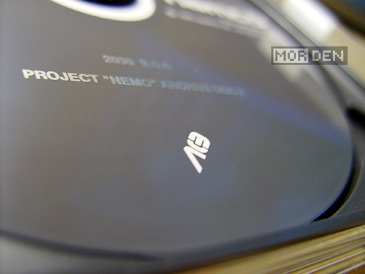
Times have changed, new hardware arrived and Namco is still going strong, but if you're looking for gameplay at its best, do yourself a favor and import Ace Combat 3: Electrosphere and play it like it should be played, with the storyline intact. It's far more elaborate than what Namco did for Type 4 and I assure you - you're missing out.
カレンダー
| 11 | 2025/12 | 01 |
| S | M | T | W | T | F | S |
|---|---|---|---|---|---|---|
| 1 | 2 | 3 | 4 | 5 | 6 | |
| 7 | 8 | 9 | 10 | 11 | 12 | 13 |
| 14 | 15 | 16 | 17 | 18 | 19 | 20 |
| 21 | 22 | 23 | 24 | 25 | 26 | 27 |
| 28 | 29 | 30 | 31 |
カテゴリー
フリーエリア
最新CM
[02/23 jikoo]
[02/23 jikoo]
[02/21 sara]
[01/04 Inlagd]
[11/21 Inlagd]
最新記事
(01/31)
(01/27)
(01/04)
(11/14)
(11/12)
最新TB
プロフィール
HN:
No Name Ninja
性別:
非公開
ブログ内検索
最古記事
(12/17)
(12/19)
(12/23)
(12/25)
(03/30)
P R


